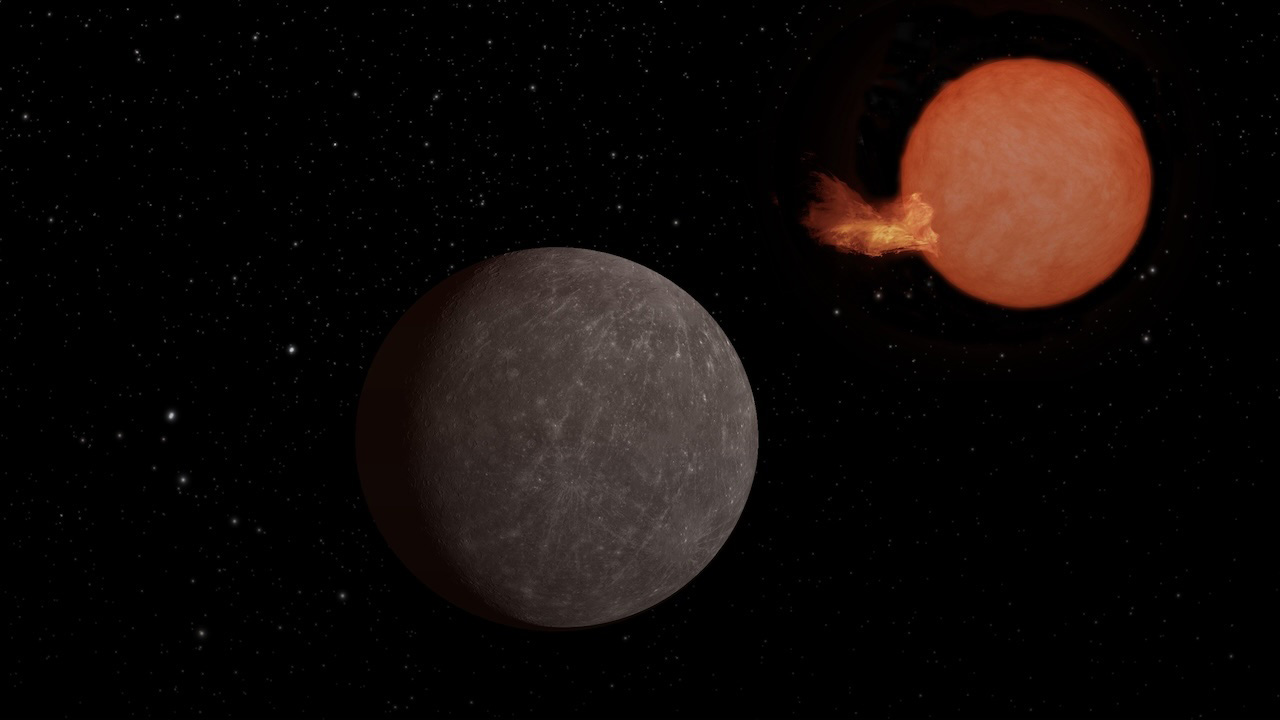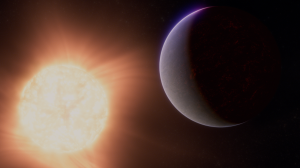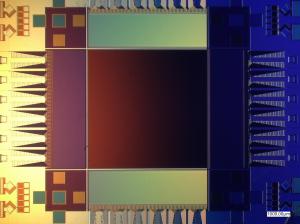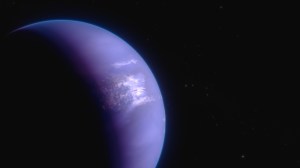Discovery Alert: An Earth-sized World and Its Ultra-cool Star
Our galaxy is a jewel box of red stars. More than 70% of the stars in the Milky Way are M dwarfs, also known as red dwarfs. These stars are cool and dim compared with our Sun, but they often blast orbiting exoplanets with high-energy radiation, especially early in their lives. And those ‘‘lives’’ last […]
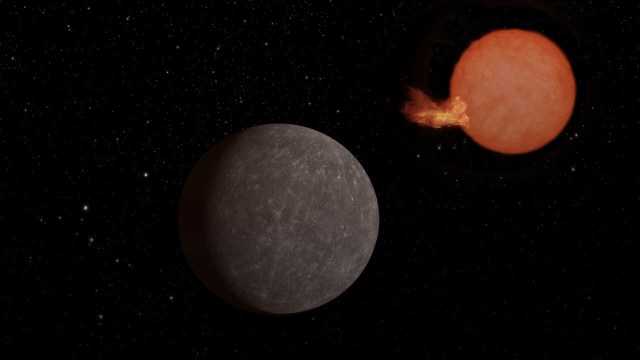
4 min read
Discovery Alert: An Earth-sized World and Its Ultra-cool Star
Our galaxy is a jewel box of red stars. More than 70% of the stars in the Milky Way are M dwarfs, also known as red dwarfs. These stars are cool and dim compared with our Sun, but they often blast orbiting exoplanets with high-energy radiation, especially early in their lives. And those ‘‘lives’’ last a long time. Stars like our Sun burn for about 10 billion years before turning into hungry red giants devouring any planets too nearby. M dwarfs keep burning for 100 billion years or more, perhaps offering a foothold for life, and an even longer window for life to develop.
An international team using robotic telescopes around the world recently spotted an Earth-sized planet orbiting an ultra-cool red dwarf, the dimmest and longest-lived of stars. When the universe grows cold and dark, these will be the last stars burning.
The Discovery
The exoplanet SPECULOOS-3 b is about 55 light-years from Earth (really close when you consider the cosmic scale!) and nearly the same size. A year there, one orbit around the star, takes about 17 hours. The days and nights, though, may never end: The planet is thought to be tidally locked, so the same side, known as the dayside, always faces the star, like the Moon to Earth. The nightside would be locked in never-ending darkness.
The Details
In our corner of the galaxy, ultra-cool dwarf stars are ubiquitous. They are so faint that their planetary population is largely unexplored. The SPECULOOS (Search for Planets EClipsing ULtra-cOOl Stars) project, led by Michael Gillon at the University of Liège, Belgium, was designed to change that. Ultra-cool dwarf stars are scattered across the sky, so you need to observe them one by one, for weeks, to get a good chance to detect transiting planets. For that, you need a dedicated network of professional telescopes. This is the concept of SPECULOOS.
‘‘We designed SPECULOOS specifically to explore nearby ultra-cool dwarf stars in search of rocky planets,’’ Gillon said. ‘‘With the SPECULOOS prototype and the crucial help of the NASA Spitzer Space Telescope, we discovered the famous TRAPPIST-1 system. That was an excellent start!’’
Gillon is the lead author of the paper announcing the planet’s discovery, published May 15, 2024, in Nature Astronomy. The project is a true international endeavor, with partnership with the Universities of Cambridge, Birmingham, Bern, Massachusetts Institute of Technology, and ETH Zürich.
The SPECULOOS-3 star is thousands of degrees cooler than our Sun with an average temperature of about 4,760 F (2,627 C), but it pummels its planet with radiation, meaning there’s likely no atmosphere.
Seeing the star, let alone the planet, is a feat in itself. “Though this particular red dwarf is more than a thousand times dimmer than the Sun, its planet orbits much, much closer than the Earth, heating up the planetary surface,” said co-author Catherine Clark, a postdoctoral researcher at NASA’s Jet Propulsion Laboratory in Southern California.
Fun facts
- While the planet is as big around as Earth, its star is just a tad bigger than Jupiter – but much more massive.
- The planet receives almost 16 times more energy per second than Earth receives from the Sun.
- Did you catch the cookie connection? The planet-finding program SPECULOOS shares its name with the spiced shortbread. Both hail from Belgium. Sweet!
The Next Steps
SPECULOOS-3 b is an excellent candidate for followup observations by the James Webb Space Telescope. Not only might we learn about the potential for an atmosphere and about the surface mineralogy, but it might also help us understand the stellar neighborhood and our place in it.
‘‘We’re making great strides in our study of planets orbiting other stars. We have now reached the stage where we can detect and study Earth-sized exoplanets in detail. The next step will be to determine whether any of them are habitable, or even inhabited,’’ said Steve B. Howell, one of the planet’s discoverers at NASA Ames Research Center in Silicon Valley.
This story was written by the late Kristen Walbolt, who managed both exoplanets.nasa.gov and @NASAExoplanets social accounts, growing the latter from a following of 126,000 to over 1.9 million in just five years. This Discovery Alert and the associated illustration are among the final pieces of Kristen’s work for NASA Exoplanets.
Share
Details
Related Terms
What's Your Reaction?



















.jpg?#)























